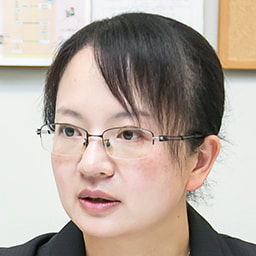On-demand viewing is a privilege of SRSS & JSID members and paid registrants.
Abstract
Dendritic cells (DC), macrophages and monocytes, composing the mononuclear phagocyte system (MPS), play crucial and distinct roles in tissue homeostasis and immunity, but also contribute to a broad spectrum of pathologies and are thus attractive therapeutic targets. Potential intervention strategies aiming at manipulation of these cells will require in-depth insights of their origins and the mechanisms that govern their homeostasis and activation. Our approach encompasses the integration of high dimensional platforms such as RNAseq, single cell transcriptome analysis and deep immunophenotypic assessment using state of the art 25 parameters flow cytometry or Cytometry by Time-Of-Flight mass spectrometry (CyTOF). Such high density molecular profiling at the single level and at unprecedented dimensionality and complexity will provide new insights in the biology of DC, monocyte and macrophage cell populations.
Dendritic cells (DC), macrophages and monocytes, composing the mononuclear phagocyte system (MPS), play crucial and distinct roles in tissue homeostasis and immunity, but also contribute to a broad spectrum of pathologies and are thus attractive therapeutic targets. Potential intervention strategies aiming at manipulation of these cells will require in-depth insights of their origins and the mechanisms that govern their homeostasis and activation. Our approach encompasses the integration of high dimensional platforms such as RNAseq, single cell transcriptome analysis and deep immunophenotypic assessment using state of the art 25 parameters flow cytometry or Cytometry by Time-Of-Flight mass spectrometry (CyTOF). Such high density molecular profiling at the single level and at unprecedented dimensionality and complexity will provide new insights in the biology of DC, monocyte and macrophage cell populations.
Bio
Florent Ginhoux graduated in Biochemistry from the University Pierre et Marie CURIE, Paris VI and obtained a Masters degree in Advanced Studies in Immunology from the Pasteur Institute, Paris. He obtained his PhD in 2004 from the University Pierre et Marie CURIE, Paris VI. As a postdoctoral fellow, he joined the Laboratory of Miriam Merad in the Mount Sinai School of Medicine (MSSM), New York. In 2008, he became an Assistant Professor in the Department of Gene and Cell Medicine, MSSM and member of the Immunology Institute of MSSM. He joined the Singapore Immunology Network (SIgN), A*STAR in May 2009 as a Principal Investigator. He joined the EMBO Young Investigator (YIP) program in 2013 and is a Web of Science Highly Cited Researcher since 2016. He is also an Adjunct Visiting Associate Professor in the Shanghai Immunology Institute, Jiao Tong University, in Shanghai, China since 2015 and in the Translational Immunology Institute, SingHealth and Duke NUS, Singapore as well as in the Skin Research Institute of Singapore (SRIS), Singapore.
Florent Ginhoux graduated in Biochemistry from the University Pierre et Marie CURIE, Paris VI and obtained a Masters degree in Advanced Studies in Immunology from the Pasteur Institute, Paris. He obtained his PhD in 2004 from the University Pierre et Marie CURIE, Paris VI. As a postdoctoral fellow, he joined the Laboratory of Miriam Merad in the Mount Sinai School of Medicine (MSSM), New York. In 2008, he became an Assistant Professor in the Department of Gene and Cell Medicine, MSSM and member of the Immunology Institute of MSSM. He joined the Singapore Immunology Network (SIgN), A*STAR in May 2009 as a Principal Investigator. He joined the EMBO Young Investigator (YIP) program in 2013 and is a Web of Science Highly Cited Researcher since 2016. He is also an Adjunct Visiting Associate Professor in the Shanghai Immunology Institute, Jiao Tong University, in Shanghai, China since 2015 and in the Translational Immunology Institute, SingHealth and Duke NUS, Singapore as well as in the Skin Research Institute of Singapore (SRIS), Singapore.
|
Yuumi MATSUOKA-NAKAMURA
The role of staphylococcal Agr quorum sensing in atopic dermatitis PubMed Link |
Abstract
Atopic dermatitis (AD) is commonly associated with colonization by Staphylococcus aureus in the affected skin. S. aureus colonizes the epidermis, but it remains unclear how the host senses virulent but not commensal S. aureus to trigger skin inflammation. Phenol-soluble modulin (PSM) peptides from S. aureus form amphipathic α-helical structures capable of forming pores in artificial membranes. The expression of PSMs is regulated by the accessory gene regulatory (agr) quorum-sensing, a two-component system that responds to bacterial density. Expression of agr-regulated virulence factors, including RNAIII, were reportedly associated with community-associated-MRSA skin and soft tissue infections. Previously, we found that d-toxin, a PSM peptide, promotes Th2 type skin inflammation by inducing mast cell degranulation in a mouse epicutaneous model of S. aureus infection. We also found that PSMα induces keratinocyte damage and the release of the alarmins, IL-1α and IL-36α. Alarmin release elicits the induction of IL-17-producing γδ T cells and ILC3 via Myd88 signaling, which is critical for skin inflammation in response to epicutaneous S. aureus. Recently, we performed whole genome sequencing of S. aureus strains isolated from the cheek skin of Japanese infants and found that cutaneous acquisition of loss-of-function mutations in S. aureus agr virulence loci reduces skin colonization and protects against the development of AD. These studies indicate that agr-dependent virulence is critical for induction of cutaneous inflammation with features of new-onset pediatric AD in which colonized S. aureus retains agr gene expression.
Atopic dermatitis (AD) is commonly associated with colonization by Staphylococcus aureus in the affected skin. S. aureus colonizes the epidermis, but it remains unclear how the host senses virulent but not commensal S. aureus to trigger skin inflammation. Phenol-soluble modulin (PSM) peptides from S. aureus form amphipathic α-helical structures capable of forming pores in artificial membranes. The expression of PSMs is regulated by the accessory gene regulatory (agr) quorum-sensing, a two-component system that responds to bacterial density. Expression of agr-regulated virulence factors, including RNAIII, were reportedly associated with community-associated-MRSA skin and soft tissue infections. Previously, we found that d-toxin, a PSM peptide, promotes Th2 type skin inflammation by inducing mast cell degranulation in a mouse epicutaneous model of S. aureus infection. We also found that PSMα induces keratinocyte damage and the release of the alarmins, IL-1α and IL-36α. Alarmin release elicits the induction of IL-17-producing γδ T cells and ILC3 via Myd88 signaling, which is critical for skin inflammation in response to epicutaneous S. aureus. Recently, we performed whole genome sequencing of S. aureus strains isolated from the cheek skin of Japanese infants and found that cutaneous acquisition of loss-of-function mutations in S. aureus agr virulence loci reduces skin colonization and protects against the development of AD. These studies indicate that agr-dependent virulence is critical for induction of cutaneous inflammation with features of new-onset pediatric AD in which colonized S. aureus retains agr gene expression.
Bio
Affiliation:
Cutaneous Immunology, Immunology Frontier Research Center,
Osaka University
2020-
Associate Professor, Cutaneous Immunology, Immunology Frontier Research Center, Osaka University
2018-20
Associate Professor, Department of Dermatology, Chiba University Graduate School of Medicine
2014-17
Assistant Professor, Department of Dermatology, Chiba University Graduate School of Medicine
2013-14
Research Fellow, General Foundation Japan Preventive Medicine Association
2009-13
Postdoctoral Fellow, Department of Pathology, University of Michigan Medical School, USA. Sponsor: Gabriel Nunez
2006-09
Clinical Fellow, Department of Dermatology, Chiba University Hospital
2005-06
Clinical Fellow, Department of Dermatology, Yamanashi University Hospital
2003-05
Resident, Department of Dermatology, Yamanashi University Hospital
Affiliation:
Cutaneous Immunology, Immunology Frontier Research Center,
Osaka University
2020-
Associate Professor, Cutaneous Immunology, Immunology Frontier Research Center, Osaka University
2018-20
Associate Professor, Department of Dermatology, Chiba University Graduate School of Medicine
2014-17
Assistant Professor, Department of Dermatology, Chiba University Graduate School of Medicine
2013-14
Research Fellow, General Foundation Japan Preventive Medicine Association
2009-13
Postdoctoral Fellow, Department of Pathology, University of Michigan Medical School, USA. Sponsor: Gabriel Nunez
2006-09
Clinical Fellow, Department of Dermatology, Chiba University Hospital
2005-06
Clinical Fellow, Department of Dermatology, Yamanashi University Hospital
2003-05
Resident, Department of Dermatology, Yamanashi University Hospital
Chairs
Ken NATSUGA, Hokkaido University, Japan
Kenneth LAY, SRIS, Singapore
Ken NATSUGA, Hokkaido University, Japan
Kenneth LAY, SRIS, Singapore


